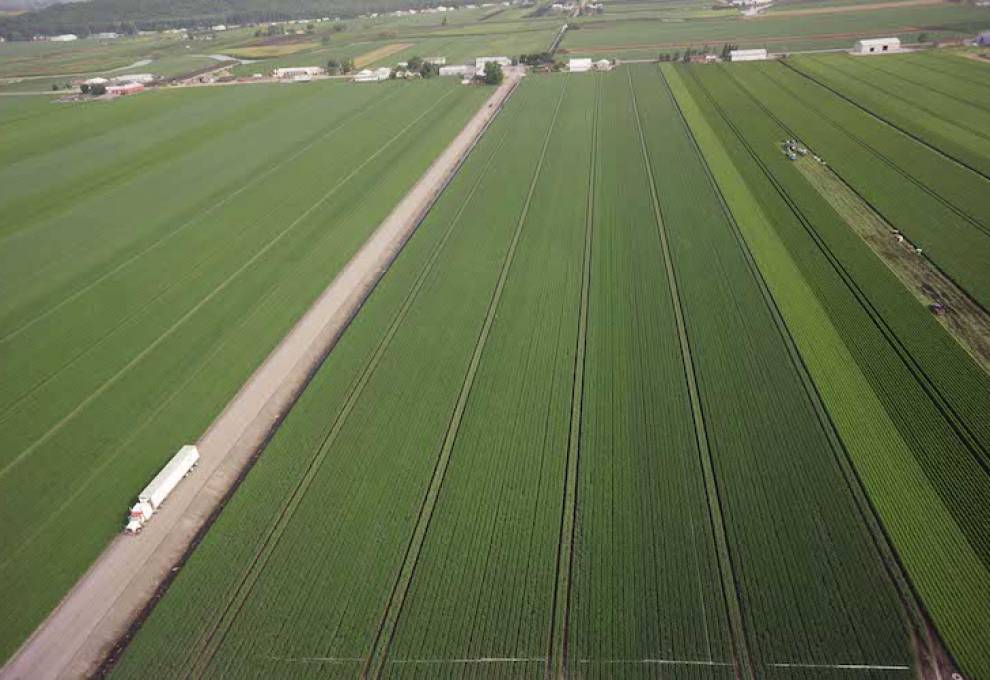
Like many businesses, farmers have seen a big increase in the amount of data collected around the farm in recent years. Information such as yield, crop quality, and localized weather data are available in much greater detail than ever before. In horticulture, increasing requirements from food safety programs have also added substantially to the amount of records collected including crop protection use. While seen as an added burden by some farmers, the collection of this data can actually be a major asset for the agriculture industry.
Government and public interest in how crop protection products are used in the field is not new by any means. In Ontario, surveys to track crop protection use have been conducted every five years since 1973. This information gets used by government, associations, and researchers to understand trends in use. This includes the type of crop, product applied, acres treated, and amount used. The closest personal information collected has been the county where the application takes place to understand usage in different parts of the province. The last survey even moved to an online platform in 2013/2014 to make completion easier. Even then, response rates have remained low and the data has not been robust enough to report use at the individual crop level for fruit and vegetables. It does however give a general indication of use trends over time.
The juggernaut that is agriculture in California has gone far beyond Ontario’s level. Its crop protection use reporting system is the most comprehensive in the world. In response to demands for more realistic data, a statutory reporting requirement was implemented in 1989. Beginning in 1990, California has required and collected full reporting of all crop protection use across the state.
Product use is reported monthly and is processed by the California Department of Pesticide Regulation. Information reported includes application date, crop, acres treated, and identity and quantity of product applied. The amount of data in the initial years of collection overwhelmed the program, however, automation and computer applications now enable this system to handle about three million records per year. This now generates highly reliable crop protection use information on all crops grown in the state.
What benefits does this bring to California farmers and in fact the rest of the United States? The statewide system greatly increases the accuracy of assumptions used by the Environmental Protection Agency (EPA) in its regulatory decisions. One of the main challenges faced by the Pest Management Regulatory Agency (PMRA) is obtaining current and accurate use information in Canada. Without updated use information, PMRA assumes very conservative assumptions in its risk assessments – maximum number of applications X maximum label rate = maximum potential risk. However, this is not accurate in the majority of situations. Products are rotated, pest pressure varies etc., and the maximum number of uses are rarely used year in and year out.
Instead, if accurate current use information is available – as is supplied to EPA by California – then PMRA risk assessments can be made with what growers are actually using in the field. Several digital systems now exist for collecting this type of information (e.g. Croptracker, SprayHub, Ginseng Manager, etc.) in support of food safety programs and to make data reporting easier. With these electronic databases already existing, they could be utilized to generate accurate use information quickly. This only requires aggregate, non-personal data and would not need to link use to the specific farm level. Having an industry summary of this information would be a huge advantage for growers, as updated use patterns can make an active ingredient much more likely to successfully pass re-evaluation.
Another advantage of California’s system is that summaries of these crop protection use records are openly accessible to the public. One can access for example, the average use of products on broccoli by year – down to the county level if desired. This has huge benefits for transparency to the public. When articles and social media stories make claims such as “farmers douse their crops in Product X”, its actual use can easily be looked up. Pretty simple, and a major advantage in an era of disinformation.
While the collection of crop protection use data has historically been a controversial subject, it’s time to recognize the benefits that this brings for farmers. We are better equipped than ever to create a system of central data collection via increasing electronic record keeping. The automation and processing challenges that California had to overcome in the early 1990s should be much simpler now.
It would enable the Canadian public to see there’s nothing to hide and go a long way in building public trust around crop protection. As a direct benefit to the farmer, PMRA will be able to make better informed decisions in its risk assessments. The good news is that practically all of this information is already being generated…it is just a matter of bringing it together.

Add new comment